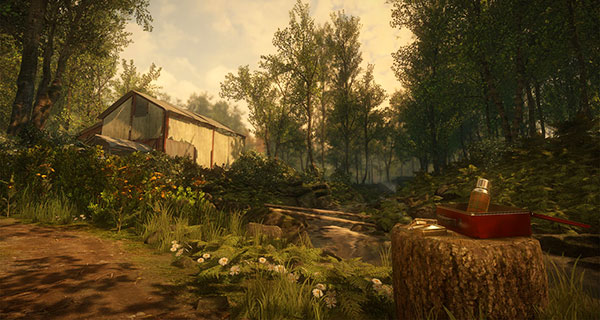With the post-apocalyptic adventure game Everybody’s Gone to the Rapture, Sony may have a cult classic on its hands. The PlayStation 4 exclusive became available Tuesday, ahead of a holiday release schedule that’s tilted in favor of Microsoft’s Xbox, as far as high-profile exclusives go.
The Chinese Room, a game development studio that previously worked exclusively on PC and Mac titles, developed Everybody’s Gone to the Rapture with the support of Sony and Sony Computer Entertainment’s Santa Monica Studio.
Everybody’s Gone to the Rapture manages to pack a lot of humanity into the game, wrote Polygon’s Philip Kollar in his review.
“It’s a bit surprising that a game where you literally never see another person has the most humanity of anything I’ve played this year,” Kollar wrote.
Still, despite a narrative that’s engrossing, it is the execution of the game’s controls and world traversal that could be offputting to some gamers, he suggested. “A few of the design choices — the walking speed in particular — pushed me away and weakened my experience.”
However, it turns out that the game does have an option to run — a player can hold down R2 to build to sprint speed. The run button is hidden, because the feature was added just before launch, according to The Chinese Room’s Dan Pinchbeck, who apologized to early players who were frustrated by the speed.
You Can Run – but Not Rerun
The independent game bears greater similarities to The Chinese Room’s Dear Esther, an adventure game in which a novelist explores a mainly deserted island, than the studio’s more recent Amnesia: A Machine for Pigs, a survival-horror game.
Although Everybody’s Gone to the Rapture flaunts graphics on par with some AAA games, and despite having the support of Sony, it retails for US$20, a price point that’s much lower than the standard $60 fare for big budget titles.
The price is low compared to the top tier of games in the PlayStation Network Store, but for Everybody’s Gone to the Rapture, perception will be extremely important, noted Christine Arrington, senior analyst of games at IHS.
“If they categorize it with other independent titles, the price point could seem rather high,” she told TechNewsWorld.
Like Dear Esther, the apparent strengths of Everybody’s Gone to the Rapture are the game’s high graphical fidelity and its story. Players explore a village in Shropshire amid the apocalypse.
As the player explores the village, looking for clues regarding what exactly went down, information can be fleeting. Once the player has seen or heard something, there’s no way to replay it, wrote Alexa Ray Corriea in her review of the game on Gamespot.
“This inability to go over information again will make you think harder. You, like Shropshire’s doomed inhabitants, only have so much time to react,” she wrote. “It adds a sense of urgency to things, making those “aha” moments when you decipher meanings all the more poignant and personal.”
Here’s a rundown of some of the game’s review scores (scaled to 10):Gamespot 9/10Polygon 7/10US Gamer 10/10Games Radar 9/10Metacritic 7.7/10Trusted Review 9/10Game Informer 7/10
The Independent Party
Sony sat out Gamescom 2015 earlier this month, and for good reason. Microsoft had a heavy presence there, fired up after its annual showdown with Sony during prime time E3. Microsoft has a lot of exclusive games to brag about this holiday season.
For Sony, there seems to be more emphasis on independent games for the PlayStation 4 this holiday season, noted IHS’ Arrington.
“I’m not sure any one game will have enough impact to mitigate the difference between the two consoles on the big name exclusives,” she said. “However, it is very important that the indy library in the PSN Store provides an attractive alternative for PS4 owners as they see the exclusives hit Xbox One.”
Independent development has become part of Sony’s culture over the years. When compared to Nintendo and Microsoft, Sony has funneled more energy and resources into incubating independent and free-to-play content on its hardware, observed George T. Chronis, director of Qualitative Analysis at DFC Intelligence.
“One, the PlayStation Network was originally a more open digital platform that did not require a subscription to access primary features, free or otherwise,” he told TechNewsWorld. “Second, Sony was forced to provide extra value and differentiation, because for many years the PS3 was significantly more expensive than its competitors.”
Now, in the PlayStation 4 era, that content differentiation is of use in competition with Microsoft and its similarly spec’d Xbox One, according to Chronis.
Sony also has ambitious plans for establishing its online streaming services across several platforms, he pointed out. Those platforms range from the handheld Vita to Sony Bravia TVs that support the company’s PlayStation Now game delivery service. PlayStation Now extends to third-party hardware, and so will Sony’s new PlayStation Vue streaming TV service.
“So we see it not supporting AAA games any less,” said Chronis, “but boosting easy-to-deliver, accessible digital game content more.”




















































